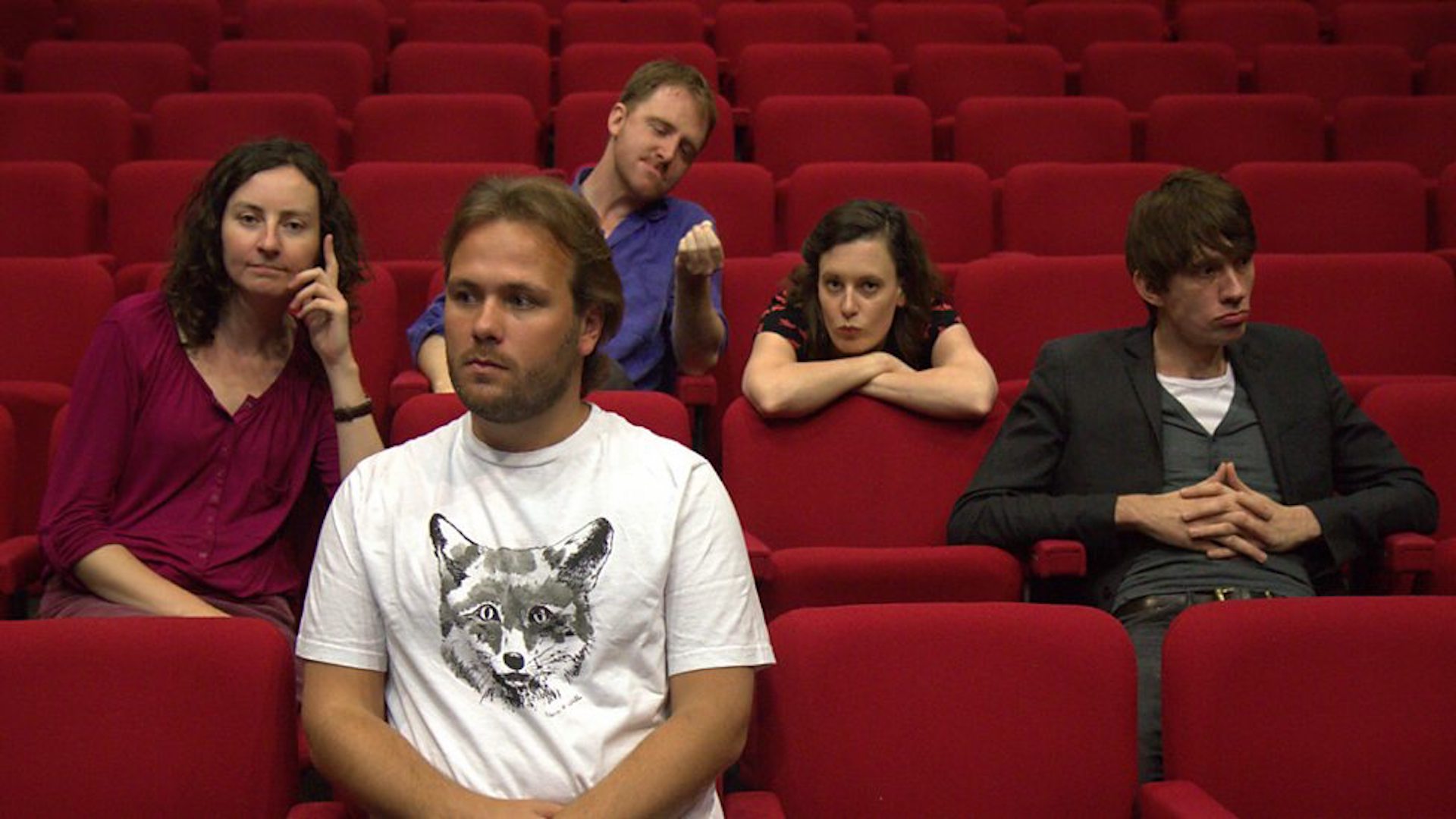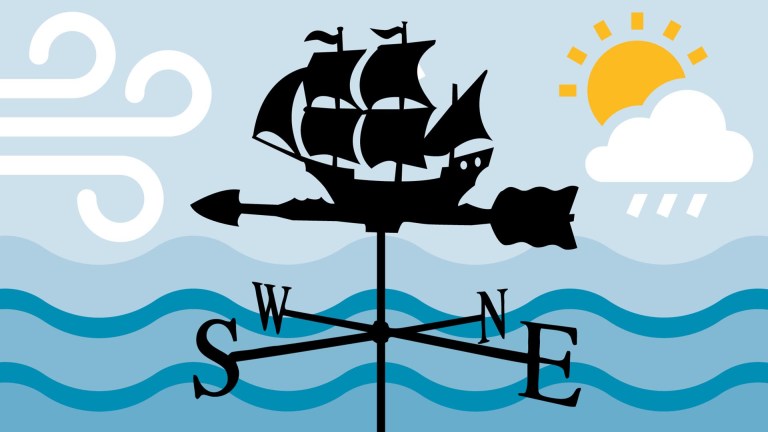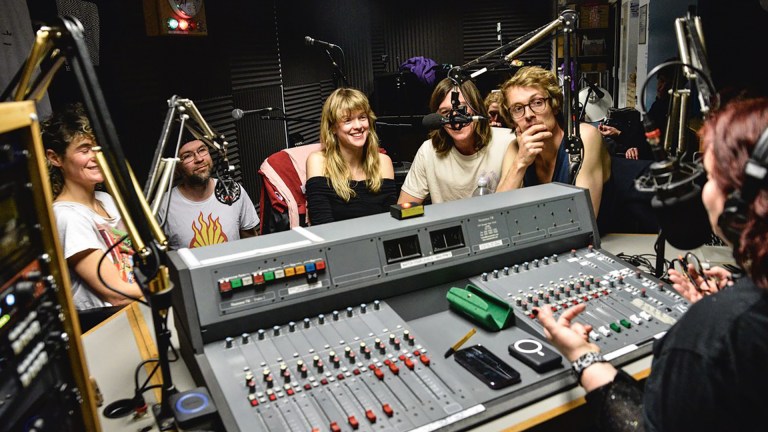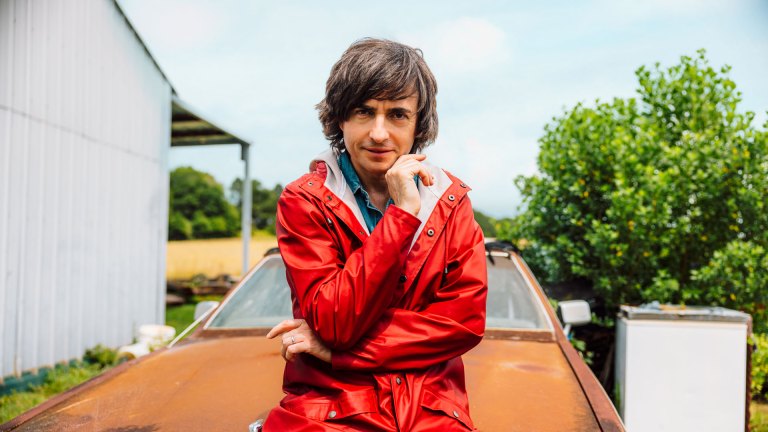This season, with its real places and ongoing stories and mysteries left hanging until the end, has been quite a departure for the show. Past seasons have tended towards the consciously, joyously silly: sketches in which a frog breaks it to his tadpoles that they’re not adopted, say, or which explore how the peasant gathering winter fuuuu-elll really felt when King Wenceslas showed up. (When one character this season says their work focuses on “animals and kings”, Finnemore is clearly writing about himself.)
Arguably, in fact, this season has been a departure for the entire notion of sketch comedy. With its punchlines and explanations deferred, sometimes for weeks; in the way characters unknowingly find themselves mirroring the actions of their ancestors, decades before; and in its sudden, unexpected gut-punches when scenes turn out not to be about bellylaughs but bereavements, it’s functioned much more like a novel. Told backwards. In a sketch show.
All this, Finnemore says, was dictated by “one decision forced on us by the pandemic”: the lack of a studio audience.
“We’d done eight years performing on stage at the Radio Theatre in front of a room full of real people who really laugh,” he explains. Virtual audiences, watching via Zoom, might work for stand up comedy or panel shows, but they felt wrong for his more whimsical sketches. “If you did it and nobody laughed it would feel rather hollow.”
So that pointed to a change in format: “Characterful, fairly real scenes that you can enjoy without hearing an audience laugh to tell you they know it’s funny”. The idea of following different generations of a family was inspired, of all things, by the opening lines of Tolstoy’s Anna Karenina: “All happy families are alike, but every unhappy family is unhappy in its own way”. “I’ve always thought, that’s rubbish isn’t it?” Finnemore says. “The happy families I know, that more or less work and love each other, all get by in extremely different ways.”
Advertising helps fund Big Issue’s mission to end poverty
That’s one reason why more than one of the nuclear family units the show gives us involve children being raised by same-sex couples. Another was simple logistics. “I have a cast of five, three men and two women” (Finnemore himself, plus Simon Kane, Lawry Lewin, Carrie Quinlan and Margaret Caborn-Smith). “In order to change things up it’s quite useful if you have same gender partnerships.”
The logistics of a small-cast were not as limiting as you might imagine. In some scenes, Cabourn-Smith plays both mother and daughter, and has to argue with herself, half the time with a German accent. “It would have been very easy just to record it twice and edit it together, but she said she preferred to be able to react off the lines and do it in real time,” Finnemore says. “She had a whole angry conversation with herself! It’s just astonishing.” (He’s equally effusive about the rest of the cast, but we’re short on space.)
I just start from the idea which is almost always bound up with the character, and explore outwards from that until I find a story with an endingJohn Finnemore
John Finnemore
The strangest element of the series – the fact it runs backwards – was dictated by the limitations of the format, too. The show, Finnemore notes, is a “6.30 comedy slot and fairly long established jolly family friendly sketch show. I felt sort of duty bound that this should be uplifting, and that these people are all more or less happy.” Running the story in reverse allowed the story to feature “some of the tragedies and the reversals of life, without which it’d be impossible to tell five life stories, but without it being a comedy drama”.
It’s that, though, which gives the story much of its power. The reverse narrative means that we can see baffling family traditions and bits of family lore in action before we discover their origin, and scenes that seemed like one thing early on are recontextualised by what we learn later. Newt’s poems, which seen through the eyes of his family seem like simple whimsy, turn out to be part of the war effort. In a scene from episode 1, set in 1990, we see him at a wake, entertaining a five year old. It’s five episodes later and 75 years in the past before we learn that, unknown to the rest of the family, he had just buried his daughter.
The same determination to let character and story lead also applied to Cabin Pressure. He originally intended the show’s cast to be structured like that of Father Ted, with two leads and two supporting roles. Then it cast Stephanie Cole as one of the latter – and “if you’ve got Stephanie Cole in your sitcom, you don’t just get her to do walk on.” So she became part of the core cast, and Finnemore found himself re-writing episode 4 to flesh out her backstory.
The relationship between the two original leads of Cabin Pressure – Roger Allam’s Douglas, and Martin, played by the (initially pre-superstardom) Benedict Cumberbatch – and the fact the wrong one was ostensibly in charge had been designed as the engine of the show. But that, too, changed on contact with the story. “I did lots of research, watched even more sitcoms than I normally would, to work out what format would keep giving me stories,” Finnemore says. “And then I sabotaged it. I allowed them to understand one another.” He’d precision engineered the perfect sitcom partnership – and then he accidentally turned them into people.
Advertising helps fund Big Issue’s mission to end poverty
But I suspect it’s this urge, to write his characters so they’re more than just ciphers, that’s led to Finnemore’s popularity. The fact he works on radio, not TV, means he is, shamefully, not a household name. But those who love his work tend to really love it.
Finnemore denies worrying about anything as pretentious as themes. “I’m sure that there are things which other people would identify that I would agree or disagree with, but there is no burning thing which I am always keen to explore. I just start from the idea which is almost always bound up with the character, and explore outwards from that until I find a story with an ending.”
I’ve been in danger, for much of this article, of accusing a radio sketch show of saying something profound about mortality, parenthood and the tree of life. I stand by this, because it definitely does. And if by some accident, you have read this far without listening, you should listen to it right now.
Well, since you ask me where you can hear season 9 of John Finnemore’s Souvenir Programme, written by John Finnemore and produced by Ed Morrish: it’s available on BBC Sounds now.









